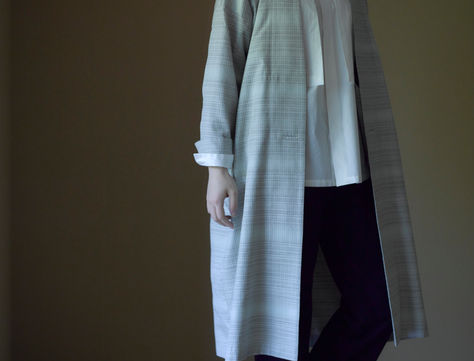hikariwomatou
2023.6.17(Sat) - 6.25(Sun)
Open : 13:00 - 19:00
Closed : Tue・Wed
The feet reveal a person's world, or a shoe's dream.
Hidetaka Fukaya, who studied in Florence, Italy and is the first and only Japanese shoemaker maestro, has looked after the feet of many people, including celebrities. 2015 marked the 10th anniversary of his luxury men's shoe brand "il micio", and he presented a sculpture at the Museo Marino Marini, the museum of sculptor Marino Marini, who is associated with Florence. Marino Marini, a sculptor with Florentine connections.
The production process is similar to his own shoemaking: a wooden model is carved and the leather shoes are sewn according to the model. The main difference is that no measurements are taken and the form is created according to Fukaya's own taste. Fukaya, who looks at people's feet on a daily basis and forms his own aesthetics there, steps into a freer and deeper world of expression based on his cultivated skills and unique artism.
The shoe sculptures created by Fukaya have a personality. Some walk lightly, others stand around suffering and hurt. They seem to express human beings themselves in a straightforward manner, with a sense of humour and cynicism. Some people in Japan may have seen his talent up close through the exhibition held at GYRE in Omotesando, Tokyo, in 2017.
Six years later, the world of this keenly sensitive artist seems to have deepened in abstraction and expressiveness, as if accompanying the transformation of the world as a whole. It has gone beyond the feet of the individual to the feet of human society as a whole, and has come to present us with an overwhelming presence and worldview. Is the world projected here chaos, or is it the world dreamt up by the great shoe?
This exhibition introduces the further expression of Hidetaka Fukaya, an artist who was born in Japan and continues to present his work in Florence.

The beginning of the long project "hikariwomatou" goes back several years.
We have been friends with Ms Horihata and Mr Sekiguchi of the clothing brand matohu for nearly 20 years now. The two have been presenting collections from the perspective of Japan and its culture, and their recent work has been born out of their travels to manufacturing sites all over Japan. We also caught a glimpse of the process of their collaboration over the past three years as they launched their new brand, atelier shimura, a dyeing and weaving studio in Kyoto led by Shoji Shimura, who inherited the philosophy of Fukumi Shimura, one of Japan's leading dyeing and weaving artists. I vividly recall the moment when I stepped into Shimura's studio in Kyoto and was struck by the delicate and divine purity of the threads and the beauty of the light they contained. At a time when there were only such rich and beautiful plant colours, they must have been a treasure. Not everyone could handle them every day, and that is why they were so precious, reserved for special occasions, for special classes and situations. Such beauty has led to people becoming obsessed with colours, even imitations, and nowadays we are inundated with artificial colours, and we, modern people, hardly know what real colours are... I think this is inevitable in the current of the times. But at least, in these times of desperate need, we should know, touch, wear and love true colours. If we could overlap with leisurely time, even if only a little, it would be truly rich and innovative. The threads and fabrics of atelier shimura, which are usually used for kimonos, appear as long suits and jackets by matou. Clothing, textiles, cloth, thread, silkworms and plants. Colour, plants, photosynthesis, light, earth... The diagram leads up to micro-organisms and atmospheric units. And the time axis stretches from the here and now to the future. The colours produced by plant life shine gently and delicately. They are the very colours of light. As someone who is devoted to an art world that transcends categories, I feel a great deal of sympathy for the birth of this festive project 'hikariwomatou'. I am excited to continue the project in Kyoto, Nagoya and Tokyo and hope to share it with many people around the world.
Gallery NAO MASAKI
Nao Masaki

Established in 2005, the brand is based on the concept of "creating new clothes with an underlying Japanese aesthetic". Through the Tokyo Collections and exhibitions at museums, the brand presents works that sublimate history, aesthetics and traditional techniques in a contemporary way. The brand is one of the leading contemporary Japanese brands and has received high acclaim from domestic and international media.

A dyeing and weaving brand that inherits the artistic spirit of Shimura Fukumi. It was established in 2016 with the aim of conveying the colourful world of plants to the next generation of makers, led by Masashi Shimura. Everything is dyed with plant life, such as roots, branches and leaves, and woven on a handmade machine in a workshop in Sagano, Kyoto.













